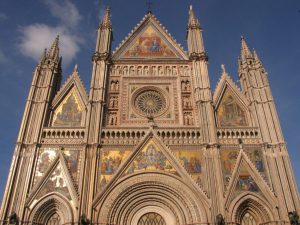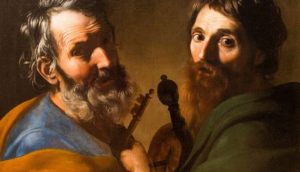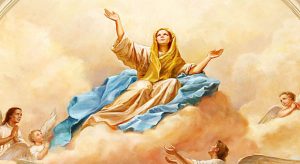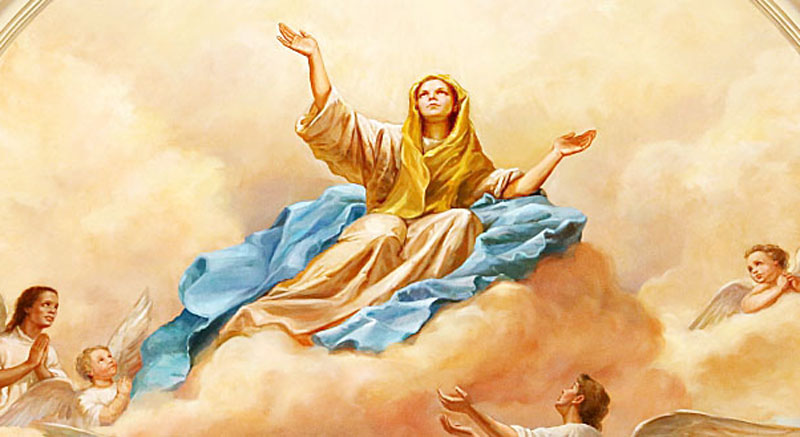Last Updated on August 17, 2025 by Editor
By A.J. VALENTINI
Summer has arrived, and with the warm weather comes a myriad of Catholic celebrations.
In many towns, patron saints are celebrated with Masses, festivals and banquets. In our own community we see similar parish festivals, such as those of St. Anthony, Santa Rosalia, and our own St. Mary of Mount Carmel. The Universal Church celebrates some feast days.

Corpus Christi
Celebrated in late May or early June, this feast honors the real presence of Jesus in the Eucharist, often marked by processions with the consecrated host.
We can trace this feast back to the Miracle of Bolsena. In 1264, a parish priest, who was at the time having conflicted feelings about his beliefs, was offering Mass. At the point where he raised the host at the Consecration, it dripped blood onto the altar cloth.
The feast of Corpus Christi was proposed by Thomas Aquinas, doctor of the Church, to Pope Urban IV. The pope was living in the Umbrian town of Orvieto, and a great Basilica was erected there to house the stained cloth, and remains there today.

Sacred Heart of Jesus
In 1675, Jesus told St. Margaret Mary that He wanted the Feast of the Sacred Heart to be celebrated on the Friday after the Corpus Christi octave. In 1856, the celebration of the Sacred Heart became a universal feast. It remembers Jesus’ love for humanity.
During this celebration Catholics are encouraged to seek healing and reunion for broken families and pray the Litany of the Sacred Heart. Catholics believe that Christ died on the cross for all people. No one is beyond forgiveness. We pray for our enemies as well as our friends.

Feast of St. John the Baptist
This feast is celebrated in the Catholic, Eastern Orthodox, Anglican and Lutheran churches on June 25. It celebrates the birth of Jesus’ cousin as related in the Gospel of Luke.
For Christians, John prepared the way for Jesus. Even the circumstances of his birth mirror, in a way, those of Jesus. John’s father Zecharia, a Jewish priest, and mother, Elizabeth were childless and well beyond their child-bearing years. The Archangel Gabriel appeared to Zecharia to inform him he would be a father, but because the old man couldn’t believe Gabriel, he was rendered speechless until the baby was born.
Jesus’s birth was also announced by Gabriel, and Joseph doesn’t speak a word in the Gospels. This is one of the oldest feast days on the Christian calendar, going back at least to 506 CE. It is sometimes called “summer Christmas,” remembered with bonfires, blessings of herbs and flowers, and is tied to the midsummer celebrations.

Feasts of Sts. Peter and Paul
This feast on June 29 honors two foundational figures of the early Church. Legends say that the two founders of the Church were executed on the same day. Historical records, however, put Peter’s death in 64 CE and Paul’s in 67 CE.
Peter was crucified upside down (he didn’t feel worthy to die in the same manner as Jesus) in Nero’s circus on the Vatican Hill. Paul was beheaded because he was a Roman citizen.
In a sermon in the year 395, St. Augustine of Hippo said: “Both apostles share the same feast day, for these two were one; and even though they suffered on different days, they were as one. Peter went first, and Paul followed. And so, we celebrate this day made holy for us by the apostles’ blood. Let us embrace what they believed, their life, their labors, their sufferings, their preaching, and their confession of faith.”
Though no longer a Holy Day of Obligation in the USA (since 1840), it is observed as such in some other countries.

The Assumption
This feast on Aug. 15 celebrates Mary’s bodily assumption into heaven.
The belief in Mary’s Assumption dates to the early Church and was declared officially by Pope Pius XII in 1950. It is a defined dogma of the Catholic Church, meaning it’s a belief that is considered essential to the faith.
Her Assumption is a reminder to the rest of us of our belief in our own resurrection and eternal life. The feast is celebrated by attending Mass in most places. In Siena, Italy, where Mary is the patron of the city, the “Palio,” a bareback horse race around the city’s main piazza, takes place. As a colorful procession in Medieval costumes progresses around the piazza, reverence is paid to Mary at an outdoor chapel built in the front of the city hall.
Then 10 of the 17 contrade (or neighborhoods) of the city have horses to represent them in the brutal race three times around the clay-covered track. The winner (whether the jockey stays on the horse or not) wins the palio, a special banner bearing the image of Mary, and remains “top dog” until the next running of the Palio.
